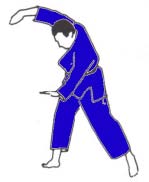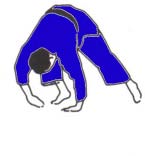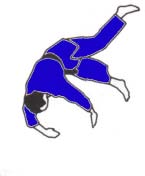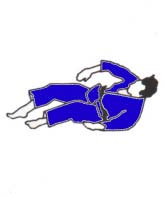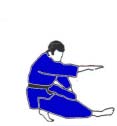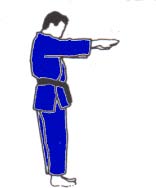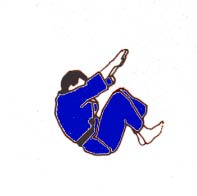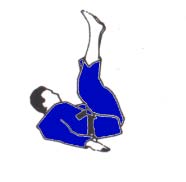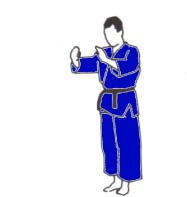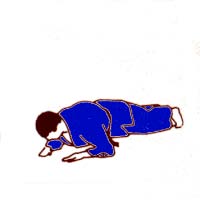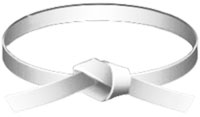 As a white belt you have chosen to begin a transforming process which will forever alter your life. Deciding to learn any martial art can be an easy decision but requires dedication, self discipline, and commitment to truly appreciate the benefits. While you train and study side by side with your fellow students and instructors, always remember that learning these skills from another is a privilage and not an entitlement. It is an honor to be allowed to participate in these studies and should never be viewed as anything else. Respect all you train with and all who instruct you always!
As a white belt you have chosen to begin a transforming process which will forever alter your life. Deciding to learn any martial art can be an easy decision but requires dedication, self discipline, and commitment to truly appreciate the benefits. While you train and study side by side with your fellow students and instructors, always remember that learning these skills from another is a privilage and not an entitlement. It is an honor to be allowed to participate in these studies and should never be viewed as anything else. Respect all you train with and all who instruct you always!
The following are the basic skills needed to pass your test and be promoted to the next belt level.
Blocks
Strikes
Stances
Diagram |
Name |
Description |
|---|---|---|
| Attention Stance
Also known as:
|
This is the attention position used before and after class. The feet are at 45 degrees. When bowing you bend 15 degrees forward, keeping your eyes facing your opponent. |
|
| Closed Stance
Also known as:
|
This can be either full facing or side facing. There are three varieties, Moa Sogi A, Moa Sogi B and Moa Sogi C. |
|
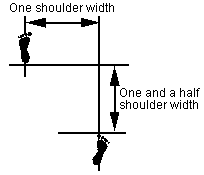 |
Walking Stance
Also known as:
|
Walking stance is used when mobility is important. It is also a precursor of the fighting stance according to some authors. Body should be relaxed. From the attention stance with feet together, one foot is placed straight ahead of the other, about a normal walking step. Some style teaches to step side way slightly. The distance between both heels is about a shoulder length to one-half shoulder length. Rear toes are turned outward about 30 degrees. The weight should be 50% Front - 50% Back. |
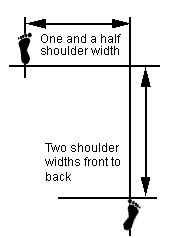 |
Front Stance
Also known as:
|
Front stance, sometimes also called forward leaning stance or forward stance, is a basic stance used in Japanese and Korean martial arts. Although the specifics of the stance vary by style, overall it is visually similar to a lunge, with the forward leg bent at the knee, and the rear leg straight, while the hips and shoulders remain squarely facing forward. The purpose of the stance is to teach musculo-skeletal alignment that adds as much mass of the earth to a strike as possible. The stance allows a great deal of power generation forward, but very little in any other direction. Weight is about 60% Front - 40% Back. |
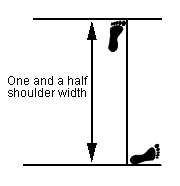 |
L Stance or Back Stance
Also known as:
|
This stance is specifically focused on shifting weight to the back leg, as it offers much more control, and makes it easier to kick off the front leg. To perform this stance, the body faces to the side, with the front foot facing forwards, front leg bent. The back leg is bent slightly, and the foot is turned outwards perpendicular to the front foot. When learning this stance, it is helpful to use a mirror. Align your feet as stated above and make sure your body is turned so only your front shoulder is visible through the mirror. Since there is virtually no weight on that front leg, it can be swept without affecting the practitioner's overall balance. The weight distribution of this stance is between 40% - 60% and 30% - 70%. Both legs should be slightly bent, the back foot or the foot with the most weight on it should be bent in slightly. the back knee should be over the foot. |
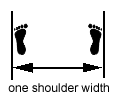 |
Parallel Stance
Also known as:
|
Ready Stance refers to the most common ready position use Tae Kwon Do training. Ready Stance is performed by standing with the feet one shoulder length apart, measured from the outside edge (Foot Sword) of the feet, with arms slightly bent and loosely held fists about one fist size apart just below the navel and the fists should be a fist size away from the body. Muscles are relaxed to promote movement speed from this position. This stance and its variants are most often used at the start of pattens. The student should be alert and aware, inhale and breathe out 1/3 of the air in your lungs. |
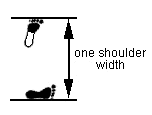 |
Tiger Stance
Also known as:
|
Stand with your front foot facing forwards and the back foot turned 45 degrees to the side, keep the feet quite close together. Shift most of your weight to your back foot, so the front foot is only for balance and you can kick from it with little body weight shifted.This stance appears in Taeguek ChilJang, which is the red belt pattern. You should also stay on the ball of your front foot for perfect balance. |
 |
Horse Stance
Also known as:
|
The sitting stance is generally used to practice punches. It is similar to the ready stance. Feet are placed much wider, about two-shoulder length's apart. Also, the knees are deeply bent. The shins should be kept perpendicular to the floor. This requires the knees to move outwards away from the body. The hands are held in fists, on the hips at belt level, with the thumbs up. When a punch is thrown, the hand rotates 180 degrees to turn knuckles up before making contact. In combat it is used when being grappled in order to have a wide stance and low center of gravity, giving stability (compare with Judo and wrestling defensive stances). Short range punches can be used on the target who is holding one around the waist. Some examples are: the last movement in Taeguek 7 - a side punch in Juchum Seogi, and stepping forward in diagonal in Juchum Seogi and punching in Hoshinsul technique. This stance can be used instead of a L-stance to perform a sidekick. The weight distribution of this stance is 50%-50% and should be directed inwards.
This stance can also be used as a stretch. The object is typically to keep the back straight while lowering the buttocks down to the ground with the legs spread keeping shins perpendicular to the floor. The ultimate goal is to maintain this posture while the tips of the belt touch the ground. |
Olympic Footwork
Falls
Forward Dive Roll - With the forward dive roll, it is sometimes helpful to imagine you are holding a large ball in order to create the rounded shape with your body.
|
Step 1 |
Step 2 |
Step 3 |
Step 4 |
Side Fall - It is important to begin lowering yourself to the ground while performing the side fall. Tighten your core and slapp the ground to distribute the impact.
|
Step 1 |
Step 2 |
Step 3 |
Step 4 |
Back Fall - Be sure to tuck your chin towards your chest as much as possible to avoid letting your head hit the ground.
|
Step 1 |
Step 2 |
Step 3 |
Step 4 |
Front Fall - Perform the front fall more like a sprawl by shooting your legs out behind and increase the distance between them in order to create a widened base.
|
Step 1 |
Step 2 |
Step 3 |
Step 4 |
Basic Korean Terms
Cha-ryot - Attention
Kyong-yet - Bow
Ku Ki - Flag
Ku Ki Kea – Face the Flag
Kiap - Yell
Hazon - Dismissed
Sabum-Nim - Instructor
SunBae-Nim – Senior Student
Kam Sam Nee Da – Thank You
Counting
1 - Hana
2 - Dool
3 - Set
4 - Net
5 - Da-Sut
6 - Ya-Sut
7 - Il-Gup
8 - Ya-Dool
9 - Ah-Hop
10 - Yool


